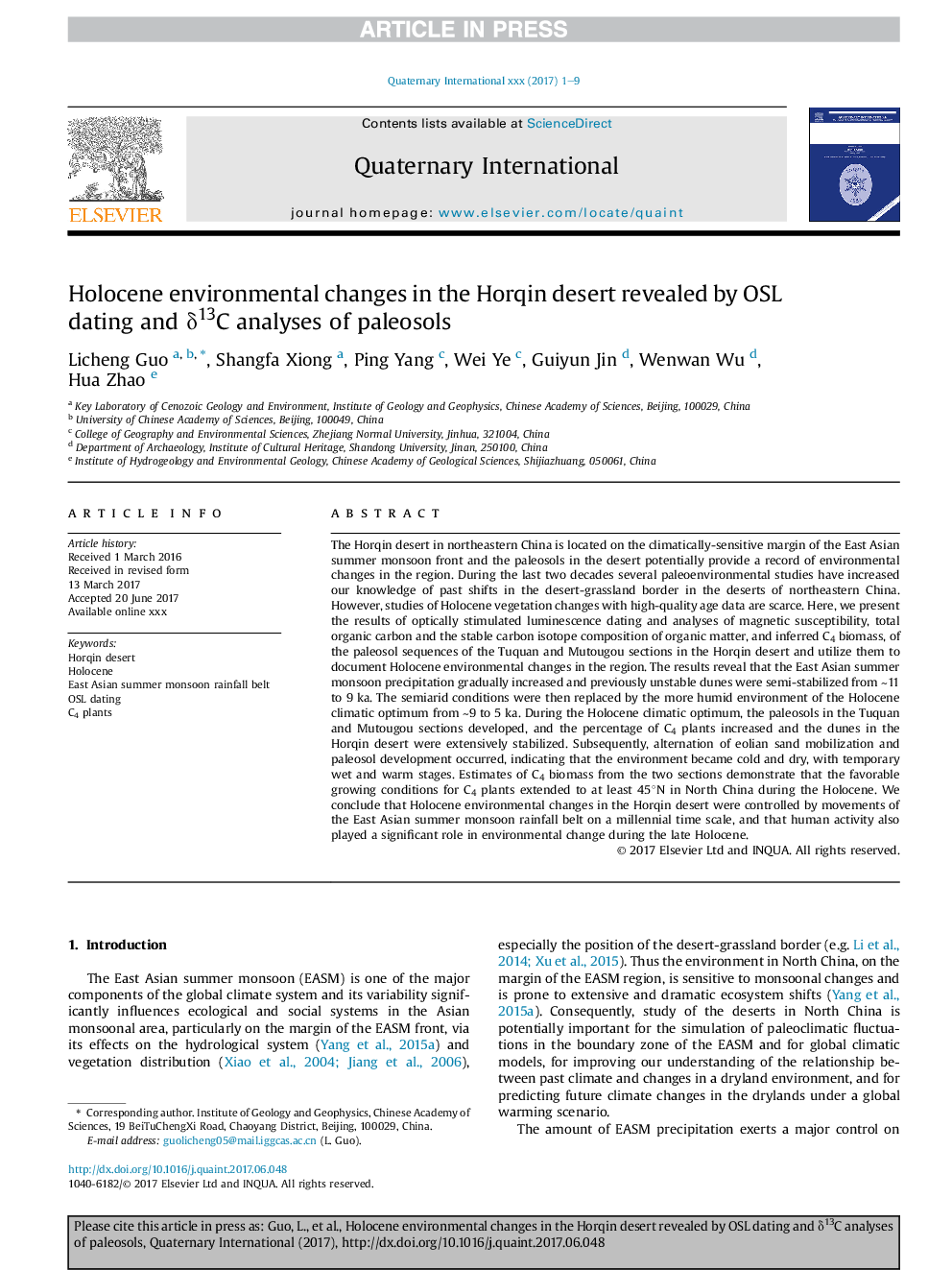| کد مقاله | کد نشریه | سال انتشار | مقاله انگلیسی | نسخه تمام متن |
|---|---|---|---|---|
| 7450312 | 1484048 | 2018 | 9 صفحه PDF | دانلود رایگان |
عنوان انگلیسی مقاله ISI
Holocene environmental changes in the Horqin desert revealed by OSL dating and δ13C analyses of paleosols
دانلود مقاله + سفارش ترجمه
دانلود مقاله ISI انگلیسی
رایگان برای ایرانیان
موضوعات مرتبط
مهندسی و علوم پایه
علوم زمین و سیارات
زمین شناسی
پیش نمایش صفحه اول مقاله

چکیده انگلیسی
The Horqin desert in northeastern China is located on the climatically-sensitive margin of the East Asian summer monsoon front and the paleosols in the desert potentially provide a record of environmental changes in the region. During the last two decades several paleoenvironmental studies have increased our knowledge of past shifts in the desert-grassland border in the deserts of northeastern China. However, studies of Holocene vegetation changes with high-quality age data are scarce. Here, we present the results of optically stimulated luminescence dating and analyses of magnetic susceptibility, total organic carbon and the stable carbon isotope composition of organic matter, and inferred C4 biomass, of the paleosol sequences of the Tuquan and Mutougou sections in the Horqin desert and utilize them to document Holocene environmental changes in the region. The results reveal that the East Asian summer monsoon precipitation gradually increased and previously unstable dunes were semi-stabilized from â¼11 to 9 ka. The semiarid conditions were then replaced by the more humid environment of the Holocene climatic optimum from â¼9 to 5 ka. During the Holocene climatic optimum, the paleosols in the Tuquan and Mutougou sections developed, and the percentage of C4 plants increased and the dunes in the Horqin desert were extensively stabilized. Subsequently, alternation of eolian sand mobilization and paleosol development occurred, indicating that the environment became cold and dry, with temporary wet and warm stages. Estimates of C4 biomass from the two sections demonstrate that the favorable growing conditions for C4 plants extended to at least 45°N in North China during the Holocene. We conclude that Holocene environmental changes in the Horqin desert were controlled by movements of the East Asian summer monsoon rainfall belt on a millennial time scale, and that human activity also played a significant role in environmental change during the late Holocene.
ناشر
Database: Elsevier - ScienceDirect (ساینس دایرکت)
Journal: Quaternary International - Volume 469, Part A, 5 March 2018, Pages 11-19
Journal: Quaternary International - Volume 469, Part A, 5 March 2018, Pages 11-19
نویسندگان
Licheng Guo, Shangfa Xiong, Ping Yang, Wei Ye, Guiyun Jin, Wenwan Wu, Hua Zhao,